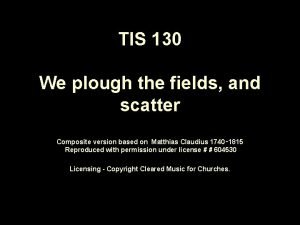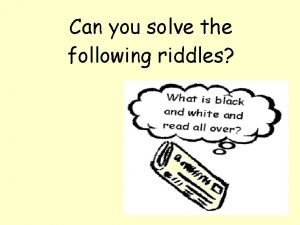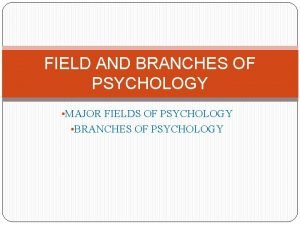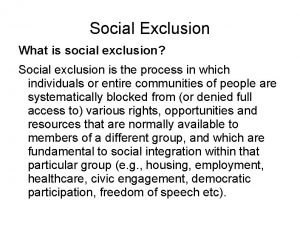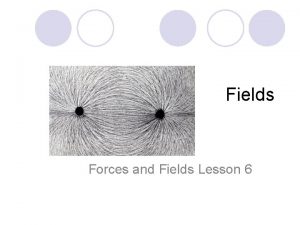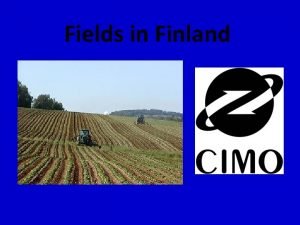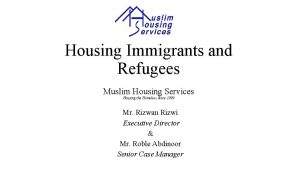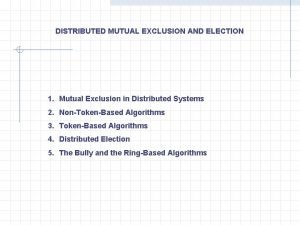Fields of exclusion Housing Socical Exclusion and the









- Slides: 9

Fields of exclusion: Housing Socical Exclusion and the Roma Ondřej Klípa

Types of spatial segragation

Principles of spatial segregation • Socio-economic status • Ascriptive characteristics (ethnicity, race)

Types – ideal typical models I • Citadel (e. g. suburb gated communities, Trump Towers): high economic status; voluntary (separation) • Slum (e. g. Brazilian favela, Mexico Citiy peripheries, but also French banlieue or some of today´s US black and Lation inner-cities): low economic status; involuntary because of poverty (only); permeable (theoretically) – people can leave the slum if they gain sufficient resources; completely dependent on outside world (no jobs in slum, no parallel institution); no collective identity and solidarity of slum dwellers („culture of poverty“ – disfunctional families, no communities)

Types – ideal typical models II • Ethnic enclave (e. g. Little Italy, China Towns today, Vietnamese quarter in Prague): various ecnomic level; voluntary (separation) • Ghetto (e. g. classical Jewish ghettos in Europe, blac neighborhoods in US cities in the first half of 20 th century): various economic level; involuntary because of ascriptive characteristics (only); non-permeable – people cannot leave the getto even if they gain sufficient resources; vastly independent on outside world (all jobs in ghetto, parallel institutions); collective identity and solidarity (culture typical for ethnic/racial group)

Social exculsion (involuntary segregation) of Roma in ECE

Slovak „osada“ Mostly low economic level; involuntary (based partly on poverty but mostly on race); very little permeability (only when the outcome of migration); highly dependent on outside world; relatively high identity and solidarity (no „osada“ communities; strong Roma vs. non-Roma identity; solidarity based on extended families)

Czech „ghetto“ Mostly low economic level; involuntary (based partly on race but mostly on poverty – there also some „white“ dwellers); permeability within the city possible but very difficult (mostly because of „vicious circle“ of poverty and also racial discrimination); totaly dependent on outside world (except for criminal activities)

Other types: Roma towns-villages in the Balkans Closer to ghetto type without its „majority“ neighbor: various economic level; parallel institutions (Roma „kings“); relatively high identity and solidarity (but it differes on place – usually in case of specific subetnic Roma groups); very little permeablity (majority population prevent the Roma to move out)
 Red fields to green fields
Red fields to green fields Electric forces and fields concept review
Electric forces and fields concept review We plow the fields and scatter
We plow the fields and scatter New consultant training
New consultant training Learning: module 26: magnetic forces and fields
Learning: module 26: magnetic forces and fields Scrap heap magnet diagram
Scrap heap magnet diagram Chapter 16: electric forces and fields answers
Chapter 16: electric forces and fields answers Solve the following riddles
Solve the following riddles Displacement current formula
Displacement current formula 3 branches of psychology
3 branches of psychology


